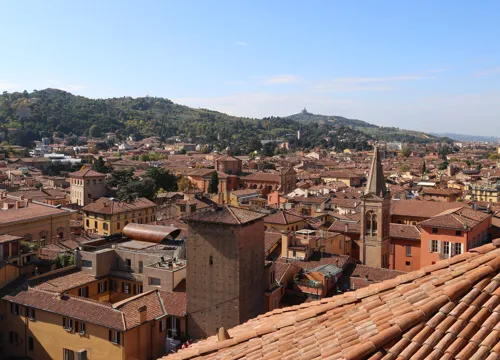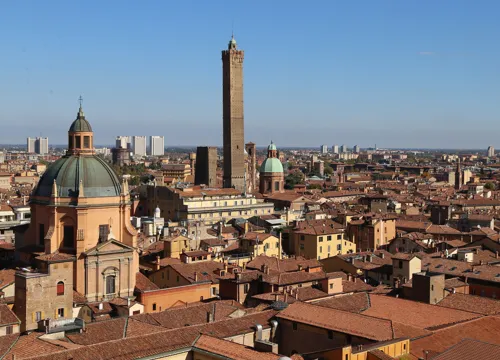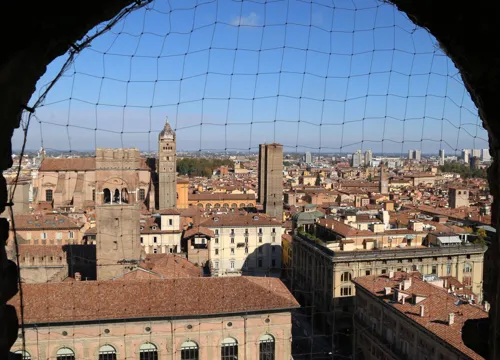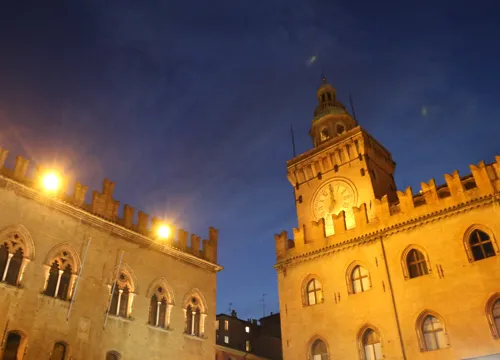Published:
Author: Antonio Maria Guerra
Mortadella
HISTORY, INFO, PLACES, INTERESTING FACTS

Mortadella is a type of sausage closely related to the Italian city of Bologna, with which, in a way, shares a soul both intellectual and easygoing. Let’s find out the fascinating history of this specialty, as well as a large number of info and interesting facts, taking advantage of the precious help of the association of its most traditional producers, the Consorzio Mortadella Bologna.

What is Mortadella?
Mortadella is a typical Italian cold cut whose origins lie belong to a distant past: some scholars speculate that they could date back to the medieval period, others to the Roman or even Etruscan era. There are several types of this specialty: the one that has become famous in the world is Mortadella Bologna IGP, produced with pork, making use of the most valuable parts of the animal. Oval or cylindrical, once cut it can be recognized by the characteristic pink color and the pleasantly aromatic scent.
In this article we’ll show you the production method currently used for Mortadella. To read it, please follow this LINK.

The origins of the name.
I’t is difficult to determine exactly the origins of Mortadella. Some interesting clues are provided by the study of the etymology of the name, an operation that has led historians to formulate two hypotheses: both would trace the famous specialty, in its primitive form (*1), to Roman times.
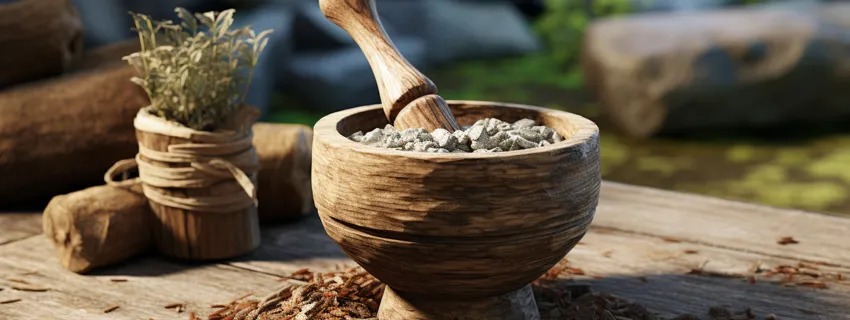
Mortadella from ‘mortarium’.
According to this hypothesis, the name ‘Mortadella’ could derive from the Latin word ‘mortarium’ (‘mortar’), indicating the tool once used to grind pork meat. An interesting evidence about this can be found in an imperial-era bas-relief (*2), depicting seven pigs next to a mortar equipped with a pestle (the ‘mortarium’).

Mortadella from ‘murtada’.
According to this second hypothesis, considered by many scholars the most reliable, the name could derive from the ‘murtada’, a kind of salami stuffed with myrtle berries, much appreciated at the time of ancient Rome, when it was known as ‘farcimen myrtatum’ or just ‘murtatum’, and therefore, not surprisingly, repeatedly mentioned by famous writers such as Pliny the Elder and Varro.
Taking into consideration these theories, it could be possible to deduce not only the birth date but also the birthplace of the true ‘ancestor’ of Mortadella, which would be the entire territory of the Italian peninsula.
Notes:
*1: So, most likely, very different from the specialty currently marketed.
*2: Stele currently on display at the Archaeological Museum of Bologna.

Mortadella Bologna
THE MOST TRADITIONAL PRODUCERS
This article is the result of the collaboration between WebFoodCulture and the Consorzio Mortadella Bologna, organization gathering the most traditional producers of the specialty.

Bologna, the city of Mortadella.
Over the centuries, the Italian city of Bologna, home of Mortadella Bologna PGI, has earned many nicknames:
Read more
- ‘The Learned’ (‘La Dotta’) with reference to its University, the most ancient in the world;
- ‘The Fat’ (‘La Grassa’) with reference to the great quality of its cuisine;
- ‘The Towered’ (‘La Turrita’) with reference to its many towers, built in medieval times;
- ‘The Red’ (‘La Rossa’) for its political leaning and the color of its ancient palaces;


The history of Mortadella Bologna.
The history of ‘Mortadella Bologna’, as it’s easy to understand from the name itself, is deeply tied to the Italian city of Bologna (*1) and to its surrounding area: an area in which, not surprisingly, pig breeding can boast a centuries-old tradition.
 One of the oldest testimonies about this specialty dates back to 1644 and is included in the treatise ‘The economy of the citizen in the country’ (‘L’Economia del Cittadino in Villa’), written by the Bolognese Marquis Vincenzo Tanara. It’s the first codified recipe for the preparation of Mortadella: although this recipe is quite different from the one currently used (*2), its value is undeniable.
One of the oldest testimonies about this specialty dates back to 1644 and is included in the treatise ‘The economy of the citizen in the country’ (‘L’Economia del Cittadino in Villa’), written by the Bolognese Marquis Vincenzo Tanara. It’s the first codified recipe for the preparation of Mortadella: although this recipe is quite different from the one currently used (*2), its value is undeniable.
Another event of fundamental importance in the history of Mortadella Bologna took place a few years later, in 1661, when the Cardinal Girolamo Farnese (*3) published a notice, the ‘Notice about the Preparation of Mortadella and Salami’ (‘Bando e Provisione Sopra la Fabbrica delle Mortadelle e Salami’), in which he set precise rules to make this cured meat (*4). The official document was, for all its intents and purposes, a production specification manual, not so different from those currently used for the PDO and IGP specialties.
Read more
A manual meant, among other things, to prevent any imitation attempt by entrusting the preparation of Mortadella only to the Guild of ‘Salaroli’ (*5).
In 1720, the rules established by Cardinal Farnese became even more stringent, thanks to a new notice, the ‘Dichiarazione del Bando delle Mortadelle’, issued by one of his ‘colleagues’: the Cardinal Curzio Origo. This new document introduced, inter alia, the mandatory use of a hallmark, the ‘Spanish Wax Seal of the Art of Salaroli’ (‘Sigillo in Cera di Spagna dell’Arte dè Salaroli’).
For many years Mortadella continued to be an exquisite and expensive specialty, thus enjoyed only by the wealthy people. Everything changed during the Nineteenth Century, when the advent of the industrial era made it cheaper, not infrequently at the expense of its quality.
Notes:
*1: Bologna, an Italian city located in the Region of Emilia Romagna, known by the Etruscans as ‘Felsina’ and by the Gauls as ‘Bononia’;
*2: For example, in the use of ingredients such as sugar, wine and spices such as cinnamon, nutmeg and cloves;
*3: Girolamo Farnese, Apostolic Legate of Bologna between 1658 and 1662;
*4. Strict rules such as the one preventing the use of any meat other than pork;
*5: It’s, therefore, no coincidence that the emblem of the Guild of Salaroli includes a mortar;

The look and the scent.
Mortadella Bologna PGI is a sausage (cold cut), made exclusively from pork’s meat. Its shape can be cylindrical or oval. The internal surface is bright pink, characterized by many white ‘dots’ (‘quadrettature’), consisting of adipose tissue (the ‘lardelli’), which gives the specialty its typical sweetness. The scent is intense, aromatic, slightly spicy.
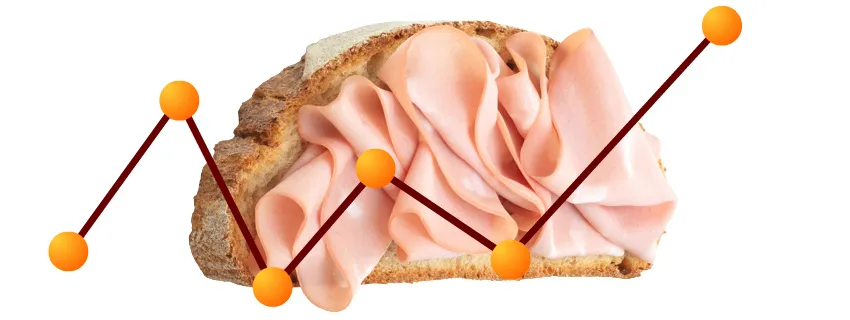
Mortadella Bologna, calories and nutritional values.
One hundred grams of Mortadella Bologna PGI have 288 calories. This specialty contains lipids, fatty acids (mostly polyunsaturated, the best for health), proteins and vitamins (B1, B2, Niacin). There are also potassium, magnesium, iron, zinc and phosphorus.
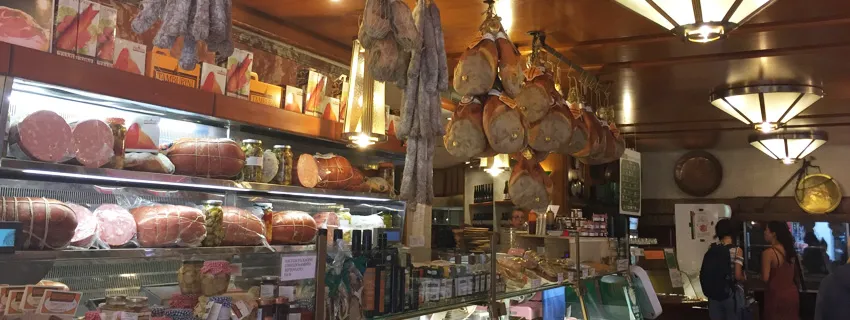
Mortadella in the Bolognese cuisine.
As you can imagine, Mortadella is the fundamental ingredient in many of the most exquisite specialties belonging to the Bolognese culinary tradition. In addition to the ‘Spuma di Mortadella’ (Mortadella Mousse), examined in another paragraph of this article, it’s impossible not to mention the ‘Tortellini’, whose taste is strongly characterized by the presence of this cold cut, and the ‘Stecco Petroniano’, one of the ‘components’ of the ‘Gran Fritto alla Bolognese’, consisting in a skewer with mortadella and cheese, breaded and fried.
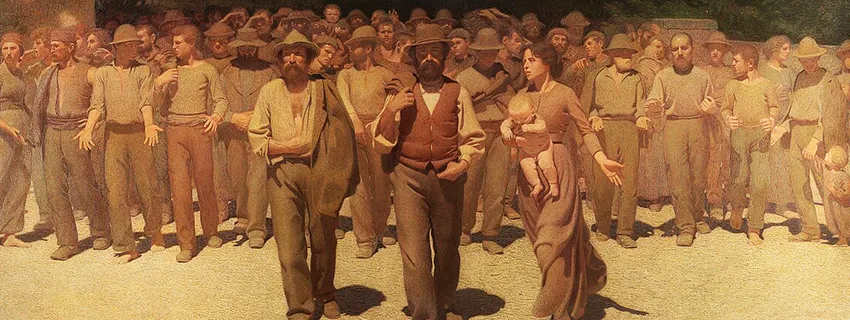
Aristocratic or proletarian food?
In Italy, during the second part of the last century (and, in part, still today), Mortadella was considered, in the collective imaginary, as the ‘proletarian’ cold cut par excellence: the essential filling of the sandwich (‘panino’), which was the typical breakfast for the average worker. This reputation was not necessarily bad but betrayed the true origins of a specialty that for centuries could be afforded only by the wealthiest classes. Its price was once very high (sometimes even higher than Prosciutto), because it was produced only by the finest artisans, using the best pork meat.
Read more
The ‘devaluation’ of Mortadella began in the Nineteenth Century, with the development of food industries: this led to a reduction of the cost for its production (increasingly delegated to the machines), typically accompanied by a constant decrease in the quality of the ingredients.
One of the main reasons for the foundation of Consorzio Mortadella Bologna in 2001, was to revive the glory of what, in the past, was considered a delicacy worthy of a king.

Rossini, music and Mortadella.
ot many know that Gioacchino Rossini, one of the most famous Italian composers, deeply loved not only music but also food.
Read more
Although born in Pesaro, he considered himself Bolognese by adoption and, as such, he knew and appreciated all the local specialties, including ‘Tortellini’ (which he enjoyed preparing by himself) and, obviously, Mortadella. A selection of his most famous musical compositions is, therefore, the most appropriate choice to accompany the reading of an article dedicated to the famous cold cut:

With and without pistachios?
According to the producti specification, Mortadella Bologna PGI can be prepared both with and without pistachios. It’s just a matter of taste: sales statistics clearly indicate that its presence is particularly appreciated in central and southern Italy.

Mortadella and cinema.
In 1971 the great Italian director Mario Monicelli dedicated one of his most successful comedies to Mortadella by naming it, not surprisingly, ‘La Mortadella’. The movie tells, among other things, the vicissitudes of the protagonist, played by the famous actress Sophia Loren, who tries to bring the sausage with her during a trip to the United States.

Consorzio Mortadella Bologna: contacts.
Address: Milanofiori – Strada 4 – Palazzo Q8
20089 Rozzano – Milano (ITALY)
Official website: www.mortadellabologna.com
Mail: info@mortadellabologna.com
Tel.: +39 02 8925901
Copyright information.
The images displayed in this page belong to WebFoodCulture and to the Consorzio Mortadella Bologna, with the exception of:
Pubblic Domain Images
- Sophia Loren, advertisement, 1955 (Wikipedia Link) {PD-US}
- Gioacchino Rossini, 1865 (Wikipedia Link)
- ‘The Fourth State’, 1901, G.P. Da Volpedo (Wikipedia Link) {PD-US}


